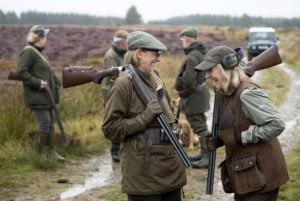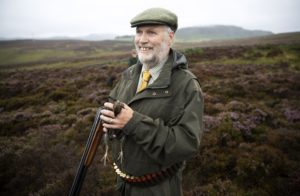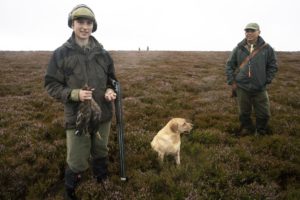[et_pb_section bb_built=”1″ fullwidth=”off” specialty=”off”][et_pb_row _builder_version=”3.12.1″ custom_margin=”0px|||” custom_padding=”0px|||”][et_pb_column type=”3_4″][et_pb_post_title _builder_version=”3.13″ custom_margin=”0px|||” custom_padding=”0px|||” meta_font_size=”12″ meta_text_color=”#cccccc” featured_image=”off” /][et_pb_text _builder_version=”3.13″]

A year ago I was speaking at a conference in Sheffield about moorland birds, concentrating as you would expect on red grouse. One of the images that I used was from a BASC campaign that proclaimed that grouse shooting was enjoyed by over 40,000 participants.
You might be one of the lucky ones, but most of us are not. I had run through my somewhat controversial presentation (on the day RSPB staff thought that it was “honest”) before I headed south and one colleague picked up on the 40,000 figure.
He correctly stated that the same number of football fans fill just one stadium every second Saturday during the football season – much longer than the shooting season – and that there were dozens of stadia in Britain.
How can we be “proud” of such a small figure?
Further extrapolation means that this relatively small number of people each shoot quite a large number of grouse in a good year. Is this sustainable? Is this the image of grouse shooting that we need to guarantee its long-term future?
[/et_pb_text][et_pb_text _builder_version=”3.12.2″]
I was hoping to develop the idea of increased participation in grouse shooting as being the way forward for this year but July’s grouse counts, and the subsequent cancellation of the majority of driven shoots, put paid to that idea. Looking at very low levels of expected participation in grouse shooting this year (due to depressed stock) after four or five years of bumper bags does not mean good timing for a new campaign.
Nevertheless, I was heartened by television coverage last week from Forneth Estate in Perthshire where my colleague Andrew Grainger (him of the football stadia comparison) had helped arrange a wee walked up day for a group of women, pensioners, young shots and others. One of the 14-year-olds shot a right and left and this was the main news story, along with the loss of an estimated £30 million to the Scottish rural economy this year.
Grouse shooting can and should be accessible to all and even in a poor year we should do all that we can to ensure maximum participation without, of course, eating into future breeding stock.
Not every 14-year-old-old can expect to shoot a brace of grouse on opening day but we should probably hope that they could. Low grouse stocks in Scotland and the north of England is not good news for the uplands.

I was asked in this blog to outline the consequences of this, rather than talk about increased participation. I would like to think that the two are compatible. To begin with, low grouse numbers means no driven shooting which means little participation. However, low stock also means a move from driven shooting to walked up shooting, as we saw at Forneth.
We know that a number of estates will have a few walked up days even if their driven days are cancelled and it would be good if more of this form of low-intensity shooting could be extended into the good years as well. I know that it is not as economically beneficial as driven shooting and that many see it as a precursor to the demise of driven shooting, and the associated moorland management and gamekeeper employment.
I see it as an additional option, one that can take place on more marginal areas of a moor and one that would allow greater participation for many more shooters. The demand is there.
As I said, it looks likely that there will be only a little driven and walked up grouse shooting this year and most moors will continue with the vital habitat management and pest control that is required to give stocks a chance to recover, even without sporting income.
This management, and next year’s spring weather, will determine whether the 2019 season will return with a bang, or whether another year of building stock will be required.
Local businesses, along with estates, will suffer financially and a little more walked-up shooting will not replace the losses from a curtailed or cancelled driven programme.
However, it will keep some participation alive and, in future years, should allow us to say that many more than 40,000 people participate.
[/et_pb_text][et_pb_cta _builder_version=”3.12.2″ button_text=”Click here ” button_url=”https://0ld.basc.org.uk/game-and-gamekeeping/game-shooting-2/grouse-shooting/” url_new_window=”on” title=”Find out more about grouse shooting” text_orientation=”left” header_font_size=”30″ background_image=”https://0ld.basc.org.uk/wp-content/uploads/2018/08/moorbg2.jpg” background_position=”top_center” custom_button=”on” button_bg_color=”#078463″ button_border_color=”#ffffff” button_use_icon=”off” button_text_color=”#ffffff” button_text_color_hover=”#90bba8″ header_font_size_tablet=”24″ header_font_size_phone=”20″ header_font_size_last_edited=”on|phone” button_border_width=”1″ custom_css_promo_button=”margin-top:10px !important;” /][/et_pb_column][et_pb_column type=”1_4″][/et_pb_column][/et_pb_row][/et_pb_section]



